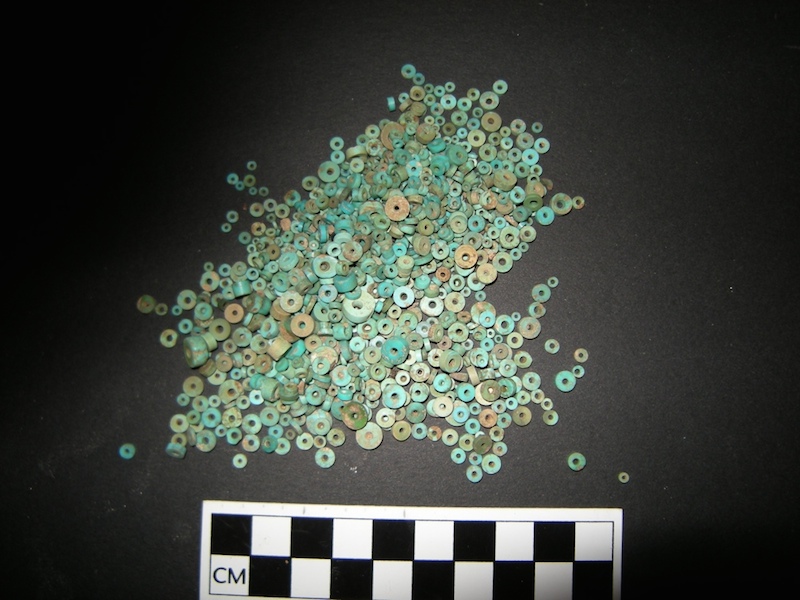
Turquoise beads recovered from early excavations at Pueblo Bonito, the largest great house in Chaco Canyon. Photo: Sharon Hull and Mostafa Fayek
UM anthropologist uncovers vast and ancient turquoise trade network
UM anthropologist Sharon Hull was recently highlighted in LiveScience for her work uncovering a vast and ancient trade network for turquoise. Her study will be published in May in the Journal of Archaeological Science.
As the article reads:
About a millennium ago, the ancestral Pueblo Indians in the Chaco Canyon in northwestern New Mexico obtained their precious turquoise using a large trade network spanning several states, new research reveals.
In the new study, researchers traced Chaco Canyon turquoise artifacts back to resource areas in Colorado, Nevada and southeastern California. The results definitively show, for the first time, that the ancestral Puebloans — best known for their multistoried adobe houses — in the San Juan Basin area of New Mexico did not get all of their turquoise from a nearby mining site, as was previously believed.
What’s more, the study reveals the Puebloan people in the Moapa Valley of southern Nevada obtained some of their turquoise from as far away as Colorado and New Mexico, suggesting the trade network ran in both directions.
“People usually think of the Chaco Canyon as this big center [for turquoise],” said study lead author Sharon Hull, an anthropologist at the University of Manitoba in Winnipeg, Canada. “But we show that people were bringing the turquoise back and forth between the western and eastern sites.”
Over the years, archaeologists have found more than 200,000 turquoise pieces at various sites in the Chaco Canyon. The gems, which were often embedded into jewelry and figurines, were very important to the Puebloan culture, and akin to modern-day diamonds, Hull told Live Science.
Initially, scientists thought the gems came from the nearest turquoise deposit more than 200 kilometers away — the Cerrillos Hills Mining District near present-day Santa Fe, N.M. But the discovery of other extensively mined turquoise deposits throughout the southwestern United States led some scientists to believe the Chaco residents acquired some of their gems through long-distance trade networks. However, the evidence was mostly circumstantial, as chemical analyses weren’t able to link the artifacts with specific mining sites.
Hull and her colleagues began their study by creating a comparative database, consisting of 800 isotope analyses from 22 resource areas in the western United States and northern Mexico. (Isotopes are atoms of the same element with different numbers of neutrons.)
–More.–
For more in Hull’s research and her collaborations with the department of geological sciences, click here.
Research at the University of Manitoba is partially supported by funding from the Government of Canada Research Support Fund.






